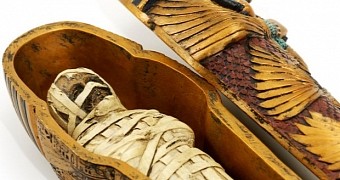Greek erudite Herodotus really took his time documenting how people in Ancient Egypt turned their loved ones into mummies following their death, as did many other ancient historians.
In fact, they did such a good job describing this practice that most of what we now know about Egyptian mummies and how they were made comes from millennia-old accounts put together by Herodotus and his crew.
Even so, a team of scientists - presumably with serious trust issues - recently decided to go ahead and mummify human flesh themselves, just to see how accurate ancient accounts of this practice are.
The would-be ancient Egyptians detail their work in a report in the journal The Anatomical Record. The paper is titled Modeling Ancient Egyptian Mummification on Fresh Human Tissue: Macroscopic and Histological Aspects.
The team didn't mummify actual humans
As part of these rather bizarre and borderline macabre experiments, the researchers first obtained two legs harvested from a body donated to scientific research.
In the paper detailing their work, they explain that they preferred to work with just these two limbs because using an entire corpse would have meant having to cut it open to remove the internal organs. Apparently, they found this task too daunting and, well, icky.
One of the legs taken from the donated body was simply placed in an oven and left there to roast in low heat. This experiment was supposed to test natural mummification in hot and arid conditions. When nothing happened after a week, this experiment was dropped.
The other limb, however, really did become a creepy-looking mummified limb after having been kept in a special hood for 208 days straight and exposed to a mixture of salts.
Writing in the journal The Anatomical Record, the scientists detail how the salts mixture, which copied an Egyptian recipe, dehydrated the leg but preserved tissues very much intact. The salts even kept the limb safe from microorganisms looking to feed on it.
Mind you, there is room for improvement
As mentioned, it took the researchers about 7 months to mummify the limb. Ancient Egyptians, on the other hand, could mummify entire corpses in just 2 months.
The team behind this modern attempt to mummify human flesh suspect that they needed more time to get the job done because the experiments were carried out in Switzerland, where local conditions are considerably more humid that in Egypt.

 14 DAY TRIAL //
14 DAY TRIAL //